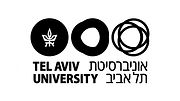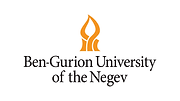
AI & Data Innovation
Harnessing AI to Drive Real-World Change
At Clalit Innovation, we don't pilot ideas—we implement them.
Our data and AI capabilities are not theoretical—they are operational and transforming care at scale.
Our data driven research focus and pillars address the most prominent areas of today’s healthcare needs.
With an unparalleled access to the largest health databases in the country, we are able to develop
innovative tools, methods and collaboration opportunities that will change the care system as we
know it and affect policies globally.

Data Driven Research
Clalit Innovation collaborates closely with Clalit's Research Institute
The Clalit Research Institute is a globally recognized research center for data science in healthcare. Integrating real world data and knowhow into innovative insights and digital health tools,
bringing together an international, multidisciplinary team of professionals in epidemiology, data science and medicine.
Clalit’s database encompasses 30 years of medical history developed from close to 7 Million patient records. The database covers information from diagnoses, hospitalizations, clinic visits, demographic and personal markers, labs, medications (ordered and fulfilled), medical procedures, and special registries.
Tools
AutoML Infrastructure
Our strong infrastructure capabilities allow us to build and develop complete predictive models in a matter of weeks (rather than months that it can take without the infrastructure)
C-Pi
We have developed a generic platform using AI and data driven proactive, preventive interventions

Methods
-
Clinical Needs Assessment
Clalit Research Institute experts collaborate closely with leading clinicians, policy makers, and other stakeholders. Together the team identifies needs, designs feasible solutions, assesses and quantifies expected value, and helps design monitoring tools to ensure the effectiveness of interventions.
-
Population Health Epidemiology
The population-based data allows for the identification of trends in incidence, prevalence, severity and mortality of key health conditions. This type of long-term and ongoing surveillance for trends in both infectious and non-communicable diseases enables policy intervention and helps to guide local (as well as regional and global) policy and decision-making.
-
Real-World Effectiveness
As an innovation-driven organization and an early adopter of new therapeutic and diagnostic technologies, Clalit is uniquely poised to perform real-world follow-up and passive evaluation of interventions, as well as pharmaco-epidemiologic assessments. We employ multiple methods that control for population biases, to measure real-world effectiveness of medications, vaccines, or health care interventions
-
Causal Inference
Causal inference is one of the most basic and critical methods used at the Clalit Research Institute, as well as in the field of epidemiology as a whole. We combine years of experience in causal study designs, with state-of-the-art methods that adapt machine-learning tools to estimate causal effects. Much of this research-level work is done in close collaboration with international leaders in academia.
Areas
Genomic Research
Behavioural Research
Health Services Evaluation
Academic Collaboration




Harvard University
Stanford University
Berkeley University
Tel Aviv University

Ben Gurion University
Covid19
Clalit Research Institute has played a key role in global pandemic policy and decision-making, with over 20 high impact papers published during the pandemic that have shed light on the vaccine effectiveness, safety, side effects, impact on specific populations of interest, virus variants and the effectiveness of booster shots.
Risk stratification models developed for Clalit’s COVID care strategy and management were implemented to manage the prioritization of individuals to receive interventions. For example, the individuals classified as at the highest risk of severe disease according to the model received a personal phone call from the physician with advice on how to best manage the risk from Covid-19, whilst the lowest risk individuals received a generic SMS with advice. These models also have and continue to play a vital role in prioritization of individuals infected with coronavirus for the various treatments available (an extremely limited resource that is not available for all infected individuals).



